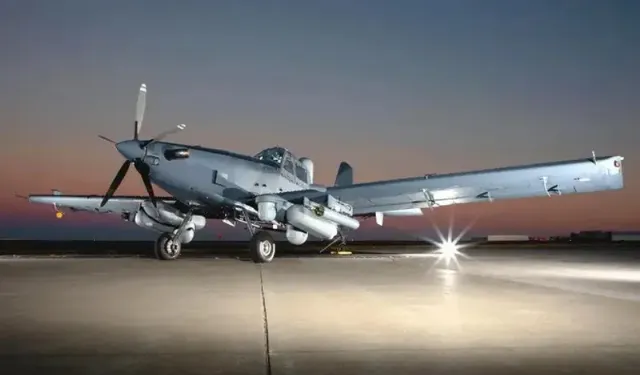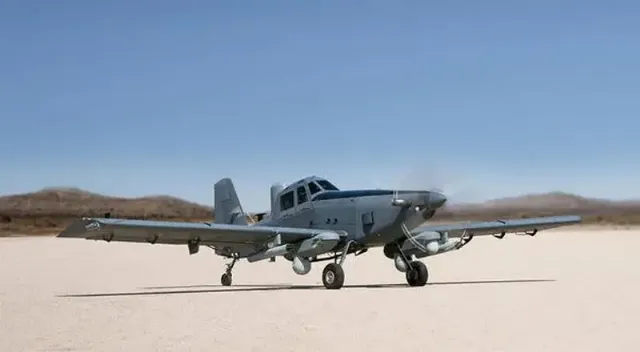
Image source: topwar.ru
The US Air Force decided several years ago, in 2022, to deploy OA-1K Skryraider II light attack aircraft on the battlefield. Now the significance of these machines is questionable.
The Air Force Special Operations Command (AFSOC) received the first aircraft of this type in April and expects to eventually acquire 75 copies. However, the Pentagon is preparing for conflicts with opponents of equal strength, not for fighting the rebels. This raises the question of the future of the program, which may be curtailed by Donald Trump's team, which has thoroughly undertaken a review of public procurement.
In 2020, during the launch of the light attack aircraft acquisition program, it was assumed that the OA-1K would perform the tasks of direct aviation support, patrol and reconnaissance, primarily to support special forces. The advantage of such an aircraft was considered to be the possibility of its transfer to remote areas, even where there is practically no infrastructure.
As indicated in the publication The War Zone, now American aviation may face not the rebels, but powerful and long-range air defense systems in the event of a large-scale conflict. Under these conditions, the expediency of using OA-1K is questioned.
Currently, the OA-1K can be equipped with short-range weapons (guided bombs, NAR, missiles). In this format, he was out of business: in the war with Russia and China, the plane would not be able to prove itself in any way. However, back in 2023, L3Harris, the main contractor of Skyraider II, modeled the potential loading of the machine, which included the AGM-84 Harpoon anti-ship missile and the JASSM-ER cruise missile with a flight range under 1000 km.

Image source: topwar.ru
A senior Air Force official told the publication on condition of anonymity that due to the long-range weapons that the OA-1K is to receive, it will operate mainly in the space adjacent to high-risk areas. It is assumed that detecting the aircraft by enemy radars will be difficult due to its maneuverability and small size.
He will also be responsible for patrolling over friendly territory, providing local protection for troops and protecting island outposts from UAV attacks, using, for example, APKWS II missiles against them. OA-1K will also perform the tasks initially assigned to him.:
- noted in the Air Force.
